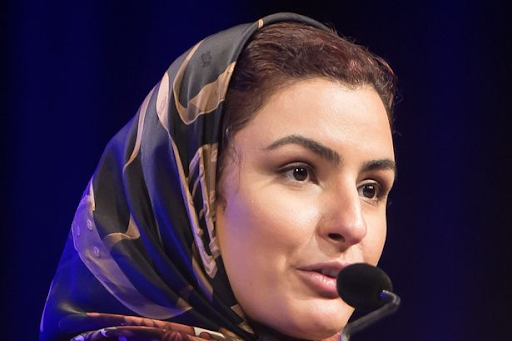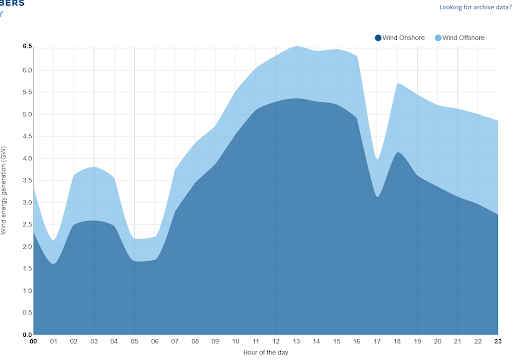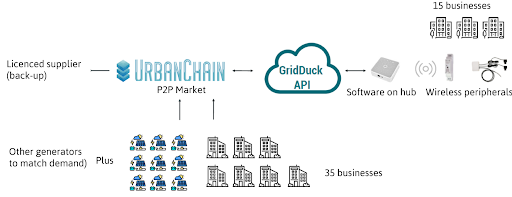Can we break the energy cycle? Interview with the CEO of UrbanChain
A disruptor in the energy market.
Innovations that disrupt markets are nothing new. In fact, the radio was once a disruptive technology as was electrical power, which displaced steam and coal. In the digital age, disruption has become a byword for a startup that completely transforms a product, solution or industry through its innovation. UrbanChain is one such disruptor for the energy market.
Founded in 2017, the Manchester company uses advanced technologies such as artificial intelligence and blockchain to directly link renewable energy generators to local consumers in almost real time, cutting out the middleman. This allows their clients to save on their bills and become carbon neutral.
UrbanChain is the only company to have approval for P2P energy trading from Ofgem, the UK energy regulator.
GridDuck has recently partnered with UrbanChain on a project for West Suffolk County Council. By working together, we anticipate that we’ll reduce energy waste, reduce carbon dioxide emissions by 250 tonnes, and maximise the use of local renewables to power a business park.
We caught up with Dr Somayeh Taheri, UrbanChain’s chief executive officer, to find out how the company is revolutionising the energy sector while also tackling fuel poverty in the UK.
You are one of UrbanChain’s founders. Why start the company?
When I was doing my postdoc as a research scientist, I was involved in the research of climate change and local deprivation, and their social, economic and environmental impacts. I found one of the main factors contributing to energy deprivation, including fuel poverty, is a broken cycle in the supply chain. I discovered and developed the first new market structure that would fix the broken cycle. When I shared the results with two university colleagues, we became co-founders of UrbanChain. We grew from there and we’re now about 10. Even though I am the CEO, I don’t see my job as telling people what to do. We are all very hands on.
How would you describe what UrbanChain does?
We create a local energy marketplace where renewable generators and consumers exchange energy directly. We provide all legal, commercial and technical requirements for the direct contract between renewable generators and demand customers. It is a peer-to-peer, or P2P local energy market, that reduces energy bills significantly and provides a much higher margin for generators. At the same time we accelerate the movement towards carbon neutrality, because our electricity is carbon neutral. If our clients are producing CO2, this will be replaced with renewable generation. And our solution can help with the electrification of heat and transport.
“This is a broken cycle. On the one hand, you want renewables; but on the other hand someone else has to pay for it.”
Why do you believe our energy cycle is fundamentally flawed?
The intermittent behaviour of renewable generation, say solar energy or wind energy, is seen as a risk by the current players in the market. So what they have done is linked renewables to the non-renewable market, or the wholesale market, traded them and then bought back the demand. However, when you link renewable energy to the wholesale market, the price can drop significantly when the sun shines consistently or the wind blows more, because the excess volume is unexpected.
In effect, renewable generators get punished for generating surpluses and get less money from the market. This is not attractive to renewable investors because it lowers their return on investment. At the same time the government wants to find a way of supporting these renewable generators to meet its targets to reduce carbon. The government adds levies to the renewables market, but who pays these? It turns out to be us. Over time those levies ramp up higher and higher, making up between 30-40% of our bills.
Unaffordable bills create fuel poverty - 13.4% of us cannot warm our home. One of the main reasons for excess winter deaths is fuel poverty among elderly people. The economic impact of fuel poverty on elderly, low-income households and children is £1.4bn a year. This is a broken cycle. On the one hand, you want renewables; but on the other hand, someone else has to pay for it.
How do you end this broken cycle?
First of all, decouple renewables from the wholesale market and use technology to handle the intermittent behaviour of renewable generators. We can predict the generation volume of renewables with an accuracy of 95% and above using AI. We then link directly to the consumer instead of going through the middleman and remove levies. Finally, maximise the efficiency in the network by creating a local exchange. This means that your neighbour has priority over the city generator, the regional generator and the national generator, to exchange energy with you.
In our model, we share the benefit with the generators and with consumers of any size, from small to big. What we’ve done is to create a level playing field for everybody with a rate based on demand. Ultimately, we make green bills affordable and we make renewables viable without government subsidies. This creates an autonomous energy market that is decentralised.
What is a “local” energy market?
It depends on the regulations and the administrative boundaries in different locations. In the UK a local energy market depends on what the customer wants. For West Suffolk County Council, one of our clients, it’s about the boundary of the local authority. Another client, such as a Housing Association, would like to create a locality around their assets between Manchester and Lancaster. Our job is to create a small, local energy market based on the blueprints and the boundary. Even in these you will find deficit and surplus. We handle the exchange between local energy markets too. Blockchain technology is behind all of the structure of our markets and helps us create a real-time exchange for customers.
What would you say are the main benefits?
The end user or the customer is seeing significant savings on their green bill, meaning they are getting their energy from renewables. From the other side, a renewable generator of any size is able to have a direct exchange with the consumer, with significantly higher margins. The third benefit is the electrification of heat and transport.
Much has been said about moving from gas to electric. How do you see the roll out?
Gas is still cheaper than electricity. As a result, it’s not viable to electrify heat. But with the system we have we can make it viable. Let’s take electric vehicles as an example. In five years’ time you might just save yourself about £100 on your fuel if you use an EV rather than a petrol or diesel car. If you think about the time you need to charge your car, you might not want to buy an EV. With the system we have we can make something like EVs much cheaper than the petrol version.
In out-of-town EV charging stations, the charges are around 32 pence per kilowatt hour. If you use UrbanChain, it will be about 10 pence per kilowatt hour and it can sometimes be lower when there is excess capacity. Using real-time technology, we can alert people when the price is low.
Do you see what you do as saving energy?
I wouldn’t say that’s what we’re doing. But we do make micro installations on household buildings viable. If you install solar assets and batteries today in your home, it’s going to take you six years to get the return on that investment. If you use our system it takes two years. You are also reducing your reliance on the grid, which is how we indirectly contribute to reducing demand for energy.
What’s your relationship with GridDuck?
GridDuck is a natural partner for us because they are focused on the demand side, reducing energy for clients by intelligently monitoring their consumption. We complement one another and we overlap. UrbanChain’s assets generate some energy on site; GridDuck can encourage consumers to use up those assets behind the metre before exporting it. For example, they help businesses figure out when appliances should be on or off based on the availability of renewable assets on the premises. GridDuck also helps their clients avoid peak-time costs, reducing energy bills even further by adjusting the demand based on the price in the network.
The average consumer will save 30% by using UrbanChain. If GridDuck comes in, potentially this client can save 10% or more. That’s the average. In extreme cases we can save 50%, up to 75% for some clients. If you’ve never switched energy and are on prepayment metres, the rates are huge. Most people are paying about 20 pence per kilowatt hour in the current market. For prepayment metres, it’s 35 to 45 pence, affecting households with low credit ratings. In a P2P market, that rate is coming down to 12 pence per kWh. The demand-side response will bring it down to 10 pence. It’s significant when it comes together.
What is your project with West Suffolk County Council?
UrbanChain and GridDuck are working with 50 businesses on an industrial park. We are going to use the solar assets in the business park for a P2P exchange between businesses. We are adding more local generators to this so that everything is coming from renewables, even when solar doesn’t generate energy. GridDuck will manage the demand side of the businesses, installing a range of sensors, clamps and smart plugs that will monitor consumption. A dashboard will help clients see it in real time and make changes.
You’re an innovative company, but what does innovation mean to you?
The most important thing is for the team members to have a can-do attitude. During our journey, we have seen technical, legal and commercial challenges. But we never stopped, we have been agile and solved them. That’s the way we do innovation. Also, you cannot start innovating today and be just one step ahead. Innovation means the products and services of the future. We don’t look at what others have done. We first throw a stone far ahead, and then move backwards to modify the current legal, commercial and technical environments, ensuring that they’re suitable for the future. We have a bottoms-up approach.
What’s your vision for the future?
The energy market is moving towards more autonomous local energy systems, with the current movements in local grid and local suppliers. We want to be the leader in this, in design and development, eventually expanding to other countries. We’re the only company to have approval for what we do from Ofgem.
When we started, the energy market was very regulated and there was little innovation. We want to attract the most talented people to come and work with us and create new possibilities. Perhaps we’ll be able to change the environment for innovators, contribute to it and invest in it.
Dr Somayeh Taheri is the CEO of UrbanChain, a peer-to-peer energy exchange system that enables renewable generators of any size to sell directly to consumers and businesses.
GridDuck is partnered with UrbanChain on projects that will help our clients save on their energy bills, reduce their energy waste and contribute to carbon neutrality.




